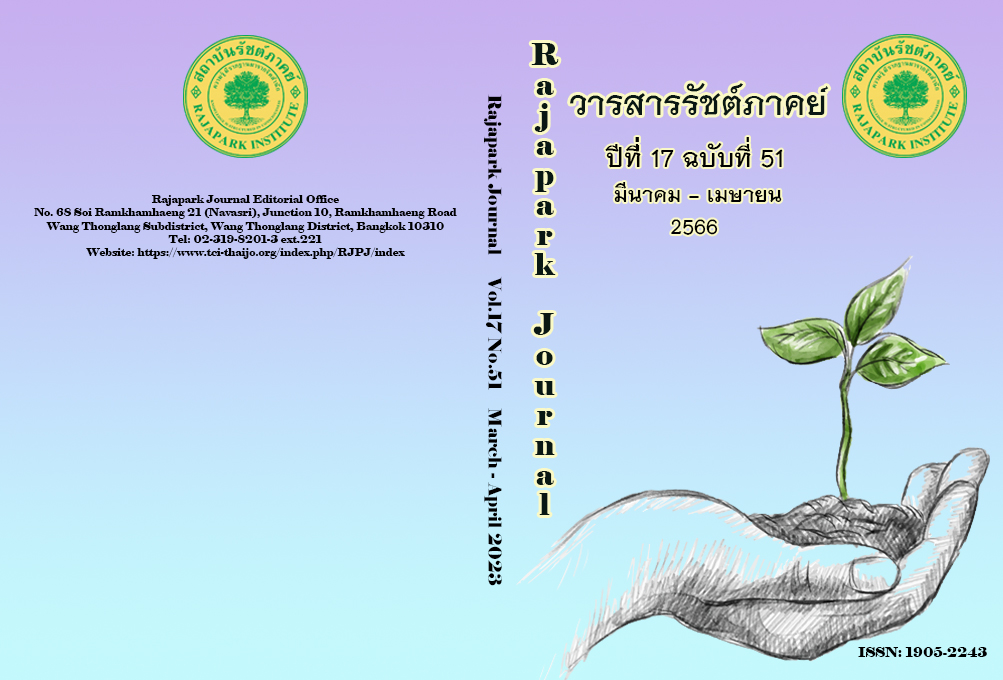Proactive Strategies for Human Resource Management of Nursing Colleges under Praboromarajchanok Institute
Main Article Content
Abstract
The purpose of this research was to develop proactive strategies for human resource management of nursing colleges under the Praboromarajchanok Institute. The research was 3 steps. 1) Studying the current condition and guidelines for proactive human resource management. The research samples were 320 administrators, nursing instructors, and 8 experts. The research instruments were a questionnaire and an interview form. The data were analyzed using the mean, standard deviation, and content analysis. 2) Constructing the proactive strategies for human resource management on the data obtained from step 1. And then, a focus group discussion was organized among 9 experts to suggest and confirm the suitability of strategies. 3) Evaluating the proactive strategies. The sample consisted of 60 nursing college administrators. The questionnaires were used. The data was analyzed using the mean and standard deviation. The results showed that the proactive strategy consisted of 5 strategies: 1) developing human resource management systems to be flexible for changes and crises; 2) reinforcing potential and developing personnel competency; 3) developing the system of information and technology for effective human resource management; 4) enhancing the efficiency of human resource management; and 5) developing the system for maintaining human resources. Finally, the result after evaluating strategies revealed that the feasibility was at high level and the utility was the highest.
Article Details

This work is licensed under a Creative Commons Attribution-NonCommercial-NoDerivatives 4.0 International License.
Views and opinions appearing in the Journal it is the responsibility of the author of the article, and does not constitute the view and responsibility of the editorial team.
References
Allui, A., & Sahn, J. (2016). Strategic Human Resource Management in Higher Education Institutions: Empirical Evidence from Saudi. Procedia-Social and Behavioral Sciences, 235, 361-371.
Amstrong, M. (2006). A handbook of human resource management practice (10th ed.). Kogan Press.
Azizi, M. et al. (2020). Innovative human resource management strategies during the COVID-19 pandemic: A systematic narrative review approach. https://www.sciencedirect.com/science/article/pii/S2405844021013360.
Chatreewisit, R. et al. (2011). Strategic Management. In house knowledge.
Cheerakan, K. (2014). In modern human resource management (Present to future). Suthiparithat journal, 28(86), 323-337.
Cheewattrakulkith, B. (2016). Strategic management (9th ed.). P. Press.
Clayton, J. (2019). The Five Stages of the Strategic Management Process. https://smallbusiness.chron.com/five-stages-strategic-management-process-18785.html.
Gomez, L., Balkin, D., & Cardy, R. (2016). Managing Human Resources (8th ed.). Pearson.
Gregory, G. (2012). Strategic management: Text and case. McGraw-Hill.
Mahidol University. (2015). Human Resources Management Strategic Plan Mahidol University 2016-2019. https://op.mahidol.ac.th/hr/wp-content/uploads/2018/07/MUHRstrategy59-62.pdf.
Malee, S. (2020). Human resource management at the Turning Point of the Decade: Human Resource Trends in 2020. https://www.ocsc.go.th/sites/default/files/document/ocsc_e-journal-year-62-1-2563.pdf.
Manomaikul, P., Polsarum, P., & Bovornsiri, W. (2019). Trends in human resource management of private higher education institutions in the next two decades. Buabandit journal of educational administration, 19(3), 135-146.
Meesapthong, C. et al. (2016). Human Resource Management in the 21st Century. Business Review Journal, 8(1), 183-197.
Mercer. (2019). Future of work, Mercer’ 2019 Global Trend: Top 5 takeaway for CHROs. https://www.cornerstoneondemand.com/resources/article/mercers-2019-global-trends-report-top-5-takeaways-chros/.
Mongkolvanit, C. (2013). Administration of educational organization and personnel (2nd ed.). Chulalongkorn University.
Nimjit, S., & Juntuk, T. (2016). The development of human resource management adventage strategy follow to quality assurance standard of Ratamongala University of Technology. RMUTT Global Business and Economics Review, 11(2), 129-144.
Office of the Civil Service Commission. (2018). Action Plan on Building and Developing Strategic Government Manpower for Digital Thailand 2018-2022. https://www.ocsc.go.th/sites/default/files/attachment/circular/attachment_0.pdf.
Patrawat, K. (2018). Skill gaps and implications for the development of Thailand's manpower. https://www.youtube.com/watch?v=1BbxUt6npVs.
Phuvittaphan, A. (2017). Human resource management with proactive strategies. https://hrcenter.co.th/file/columns/hr_f_20170509_164300.pdf
Pongboriboon, U. (2018). The Implement of Modern Human Resource Management in Institute of Nursing Education. Journal of The Royal Thai Army, 19(3), 1-9.
Praboromarajchanok Institute. (2020). Human Resources Management Strategic Plan Praboromarajchanok Institute 2020-2024. Praboromarajchanok Institute, Ministry of Public Health.
Rees, G., & Smith, P. (2014). Strategic Human Resource Management. Ashford Colour Press.
Srisaard, B. (2010). Preliminary Research. Suwiriyasarn.
Thepwan, P. (2011). Strategic human resource management: Concepts and strategics for competitive advantages. V Print.
Thompson, Jr. P., & Strickland, A.J. (2004). Strategic management: Concepts and cases. McGraw-Hill.
Thongpan, S. (2016). Proactive HR in the changing era. Journal of Graduate Studies Valaya Alongkorn Ratjabhat University, 10(3), 245-258.
Yamane, T. (1973). Statistic: An Introductory Analysis (3th ed.). Harper and Row.


